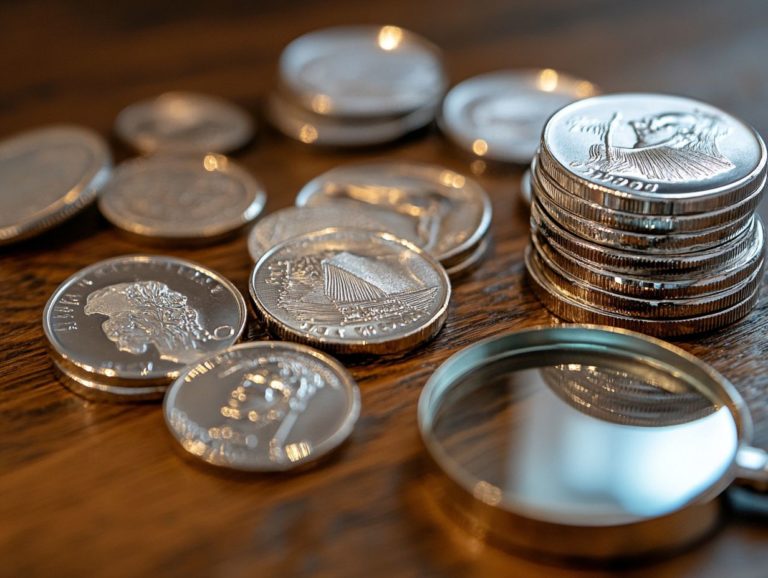The Environmental Impact of Gold Mining
Gold mining has long captivated human interest, presenting both significant challenges and remarkable opportunities.
As you explore gold extraction, consider the steps involved along with the pressing environmental concerns, such as water pollution and deforestation.
Examine the social and economic impacts on local communities and the labor practices that shape the industry.
You ll discover sustainable mining practices, including alternative methods and regulations designed to minimize harm.
Uncover the complex world of gold mining and gain a deeper understanding of its intricacies.
Contents
- Key Takeaways:
- The Process of Gold Mining
- Environmental Concerns of Gold Mining
- Social and Economic Impacts of Gold Mining
- Sustainable Mining Practices
- Frequently Asked Questions
- What is the environmental impact of gold mining?
- How does gold mining contribute to air pollution?
- What effect does gold mining have on water quality?
- How does gold mining contribute to deforestation?
- What are the long-term effects of gold mining on the environment?
- What can be done to mitigate the environmental impact of gold mining?
Key Takeaways:
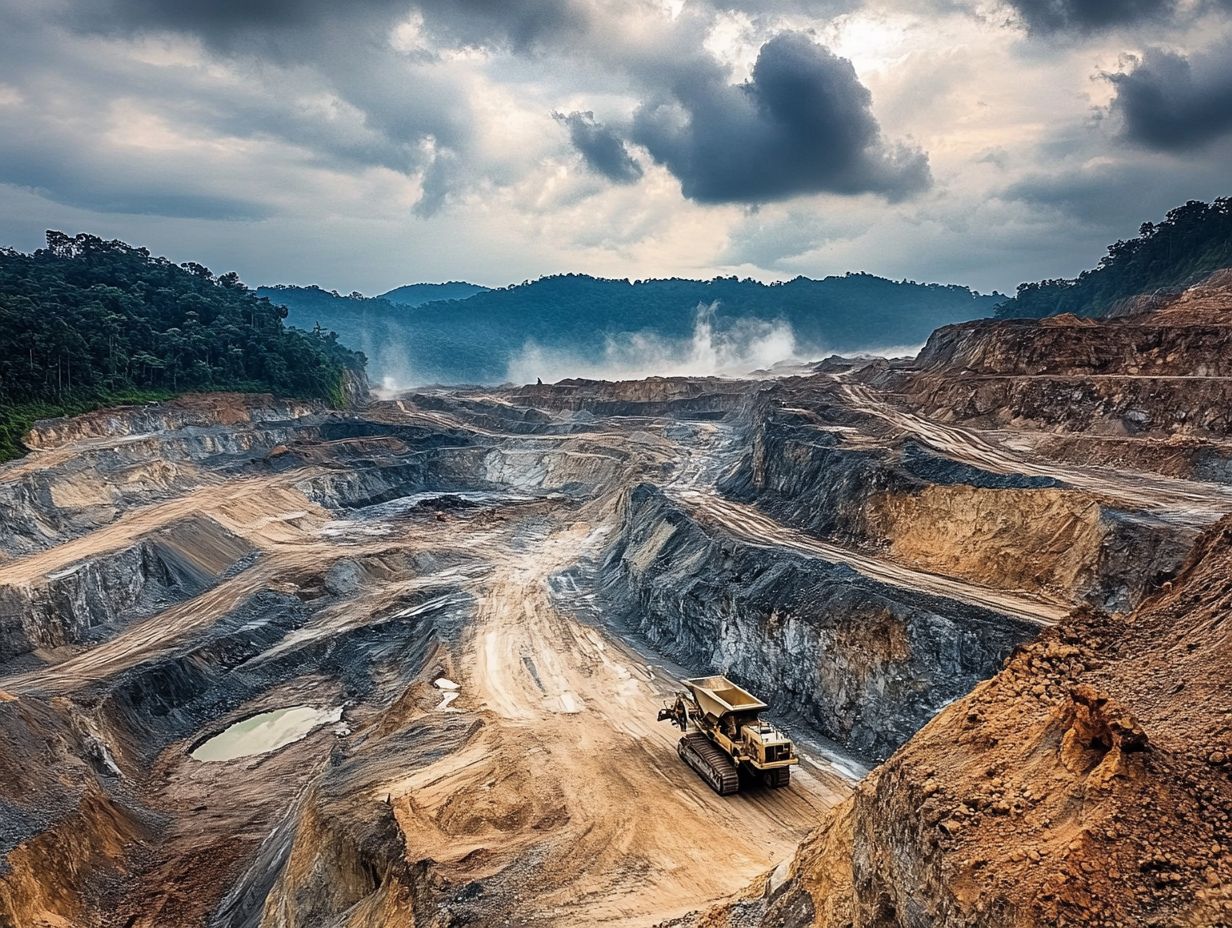
Gold mining harms the environment. Communities face negative impacts. Sustainable methods must be adopted to protect our planet.
The Process of Gold Mining
Gold mining is a complex task that uses various techniques to extract precious minerals from the earth, focusing on gold deposits.
Extraction occurs through surface mining, where layers of soil and rock are removed to reveal gold, or through underground mining, which often requires more resources.
The methods chosen can significantly affect the local ecosystem and the livelihoods of nearby communities. Understanding these implications is essential for promoting sustainable practices.
Overview of the Mining Process
The gold mining process has several stages, each with unique challenges and environmental implications.
In the exploration phase, geologists use advanced technologies like satellite imagery and surveys to locate potential gold deposits. They balance efficiency with ecological concerns to protect the environment.
Once a promising site is found, extraction begins with methods like open-pit or underground mining. However, these can disrupt ecosystems due to land alteration and water usage.
To tackle these environmental issues, many operations are turning to innovative methods like bioleaching, which uses tiny living organisms to help extract gold in an eco-friendly way.
The refining stage is vital for separating gold from impurities and has seen advancements through modern technology. However, it faces scrutiny over chemical usage and waste management, underscoring the ongoing need for sustainable practices.
Environmental Concerns of Gold Mining
The environmental issues linked to gold mining are extensive and cannot be overlooked. Water pollution, air quality problems, and deforestation are just the beginning.
Mining operations often release toxic chemicals like mercury and cyanide, threatening local ecosystems and biodiversity. These activities also create acid mine drainage, which can seep into waterways, impacting both the environment and the health of surrounding communities.
We must act now to protect our ecosystems and support affected communities. Join us as we uncover the hidden truths of gold mining!
Water Pollution
Water pollution is a major issue caused by gold mining. It often happens through acid mine drainage and the leaching of harmful materials, like mercury, into nearby rivers and streams.
Mining operations disturb the land and expose sulfide minerals to air and water. This exposure leads to a chemical reaction that produces sulfuric acid, contributing to acid mine drainage.
The effects of this acid are severe. It lowers the pH of water bodies and mobilizes heavy metals such as arsenic and lead, affecting local water systems.
Aquatic ecosystems are disrupted, making it hard for fish and other organisms to survive in these acidic conditions.
Mercury, often used in gold extraction, seeps into water sources and sediments, accumulating in the food chain. This contamination poses serious health risks for local communities, especially those who rely on fishing.
This situation highlights the environmental crisis linked to mining activities.
Deforestation
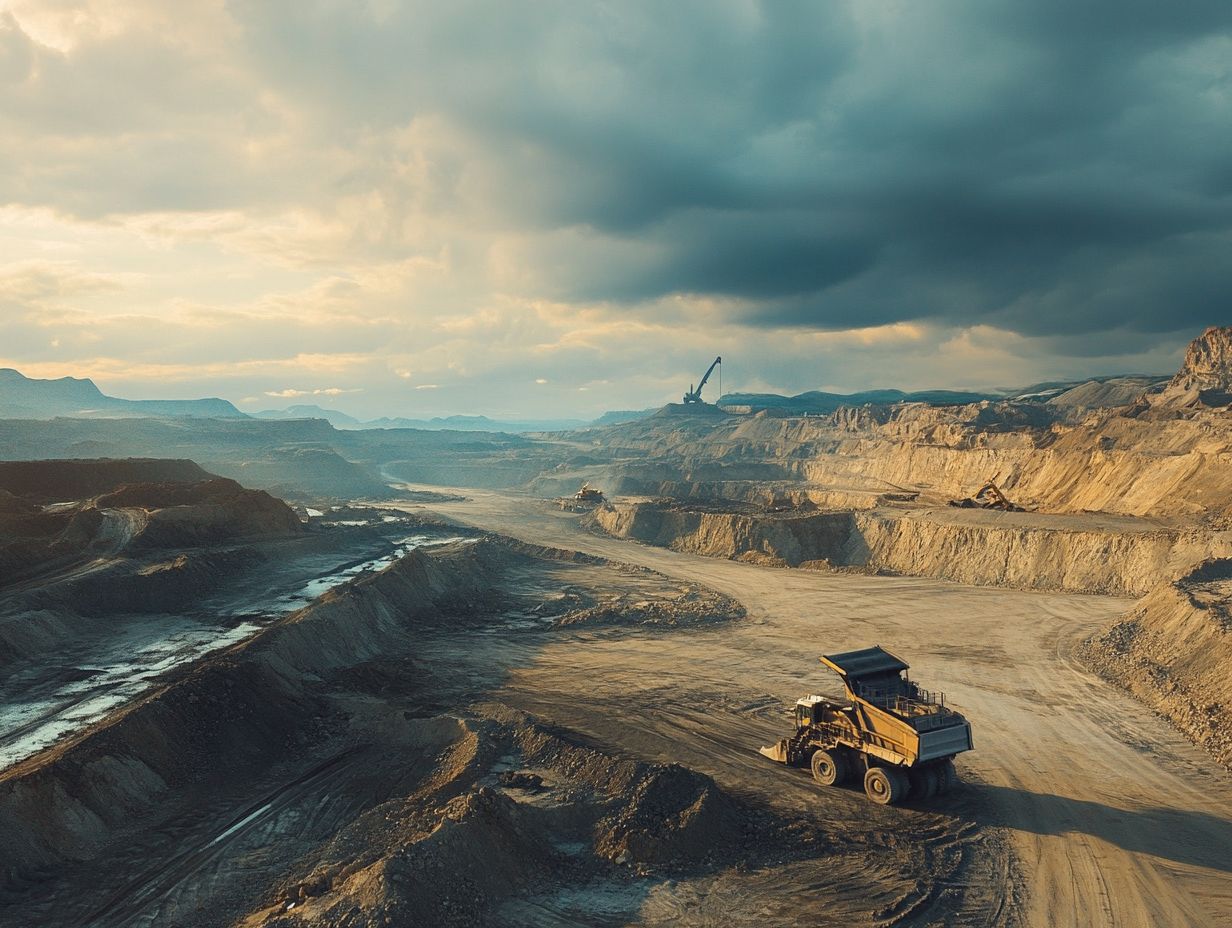
Gold mining directly causes deforestation, particularly in tropical forests. Land is cleared for extraction, leading to a significant loss of biodiversity.
This practice disrupts local ecosystems and endangers many species. It tips the balance of plant and animal life in these areas.
Recent studies show gold mining has caused deforestation rates of over 20% in certain regions. This further worsens climate change by releasing stored carbon dioxide into the atmosphere.
As the local climate changes, rainfall patterns become unpredictable. This negatively impacts agriculture and water supply.
Such environmental degradation challenges sustainability efforts. Communities face the struggle of promoting conservation while dealing with the harsh realities of resource extraction.
Air Pollution
Air pollution from gold mining presents serious health risks to nearby communities. It also contributes heavily to environmental degradation.
The extraction process involves heavy machinery, which produces large amounts of dust and harmful emissions. Toxic chemicals, such as mercury and arsenic, are released into the air.
These pollutants threaten the health of people living near mining sites. They can lead to respiratory issues, skin irritations, and long-term health problems.
Particulate matter can severely affect vulnerable groups, including children and the elderly. The environmental impact goes beyond immediate pollution, harming local ecosystems and the livelihoods of those who depend on them.
Social and Economic Impacts of Gold Mining
Gold mining significantly affects communities socially and economically. It can lead to displacement and alter local economies.
While mining may offer job opportunities and economic growth, these benefits often come with social upheaval. Indigenous populations and local communities frequently face displacement.
Recognizing these complexities is essential for developing policies that promote community awareness and equitable labor practices in the mining sector.
Effects on Local Communities
The impact of gold mining on local communities is mixed. It creates opportunities for economic growth but also presents challenges like displacement and environmental harm.
In many areas, mining brings job opportunities, improved infrastructure, and boosts local businesses. However, case studies reveal serious drawbacks, often overshadowing these benefits.
Communities may lose arable land, leading to food insecurity. Pollution from mining can also contaminate water sources, posing health risks.
The cultural and social fabric of these areas can be deeply affected as individuals are forced to move. This highlights the need for a balanced approach, prioritizing both economic development and environmental care.
Labor Practices
Labor practices in the gold mining sector are far from uniform. They can vary dramatically, influencing everything from working conditions to the economic stability of mining communities.
These differences often reflect the degree of government rules in place and the awareness of community members about their rights and safety.
Many workers are caught in harsh environments, facing inadequate pay and exhausting hours. This raises serious concerns about their welfare and the broader social implications of such employment practices.
When regulations are enforced effectively, they can transform work conditions. This leads to healthier environments that enhance the well-being of miners and spur economic growth in the surrounding areas.
By fostering community awareness, individuals can be empowered to advocate for better standards, ensuring their rights are respected. This advocacy helps ensure that mining activities contribute positively to local economies rather than detract from them.
Sustainable Mining Practices
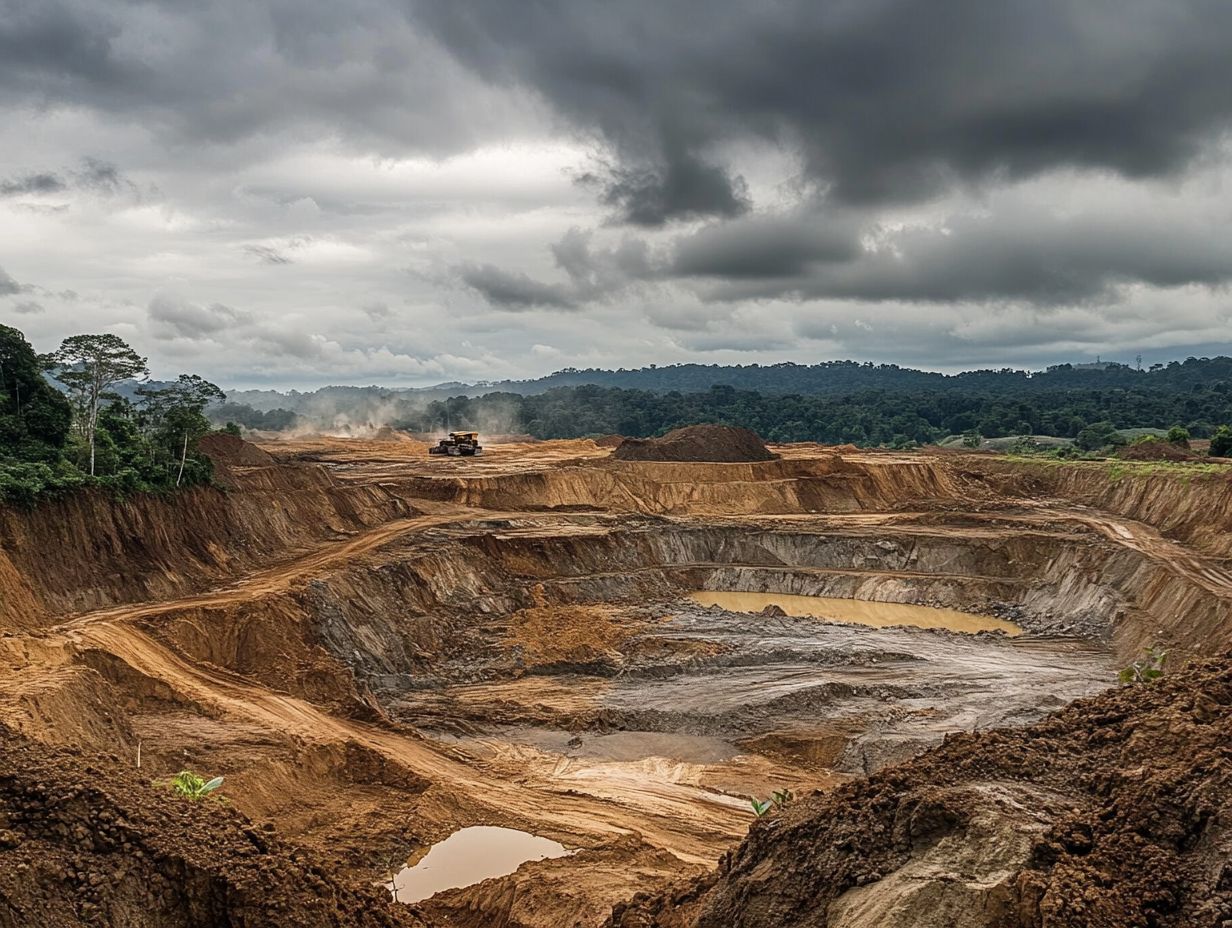
Sustainable mining practices are designed to minimize the environmental impact of mining activities while fostering economic growth and enhancing community well-being. This is an exciting shift!
This involves implementing restoration strategies for lands affected by mining, embracing principles of the circular gold economy, and adhering to rigorous environmental policies to mitigate degradation.
As the gold mining sector comes under heightened scrutiny from both communities and regulators, the demand for sustainable solutions becomes increasingly vital for ensuring ecological health and long-term viability.
Alternative Methods
Alternative methods, such as artisanal mining, are increasingly recognized as sustainable practices. These methods can significantly reduce ecological damage while simultaneously offering economic opportunities for local communities.
Artisanal mining is small-scale mining that is often done by hand. These methods often focus on small-scale operations that prioritize environmental stewardship, setting themselves apart from the large-scale devastation typically associated with conventional mining.
For instance, in various African regions, some artisanal miners utilize techniques that enhance soil and water quality. This allows for the restoration of fertile land previously compromised by industrial mining.
Projects in Colombia demonstrate that, when managed effectively, artisanal mining can bolster biodiversity and create local jobs, fostering both community development and ecological balance.
By tapping into traditional knowledge and sustainable practices, these miners can minimize runoff and habitat disruption. Ultimately, this nurtures healthier ecosystems and revitalizes landscapes.
Regulations and Policies
Regulations and policies are essential for promoting sustainable mining practices and shielding the environment from the adverse effects of mining operations. These frameworks not only ensure that mining activities are carried out responsibly but also offer guidelines for minimizing ecological disruptions and protecting local communities.
- Enhancing existing regulations to keep up with technological advancements.
- Strengthening community awareness of existing laws.
- Empowering individuals to advocate for enforcement.
- Fostering a collaborative relationship among citizens, mining companies, and regulatory bodies.
This engagement is vital for developing sustainable mining initiatives that prioritize ecological health while also supporting economic growth.
Frequently Asked Questions
What is the environmental impact of gold mining?
The environmental impact of gold mining refers to the negative effects that it has on the natural environment, such as air and water pollution, deforestation, and disruption of wildlife habitats. To learn more, explore the details on the environmental impact of precious metal mining.
How does gold mining contribute to air pollution?
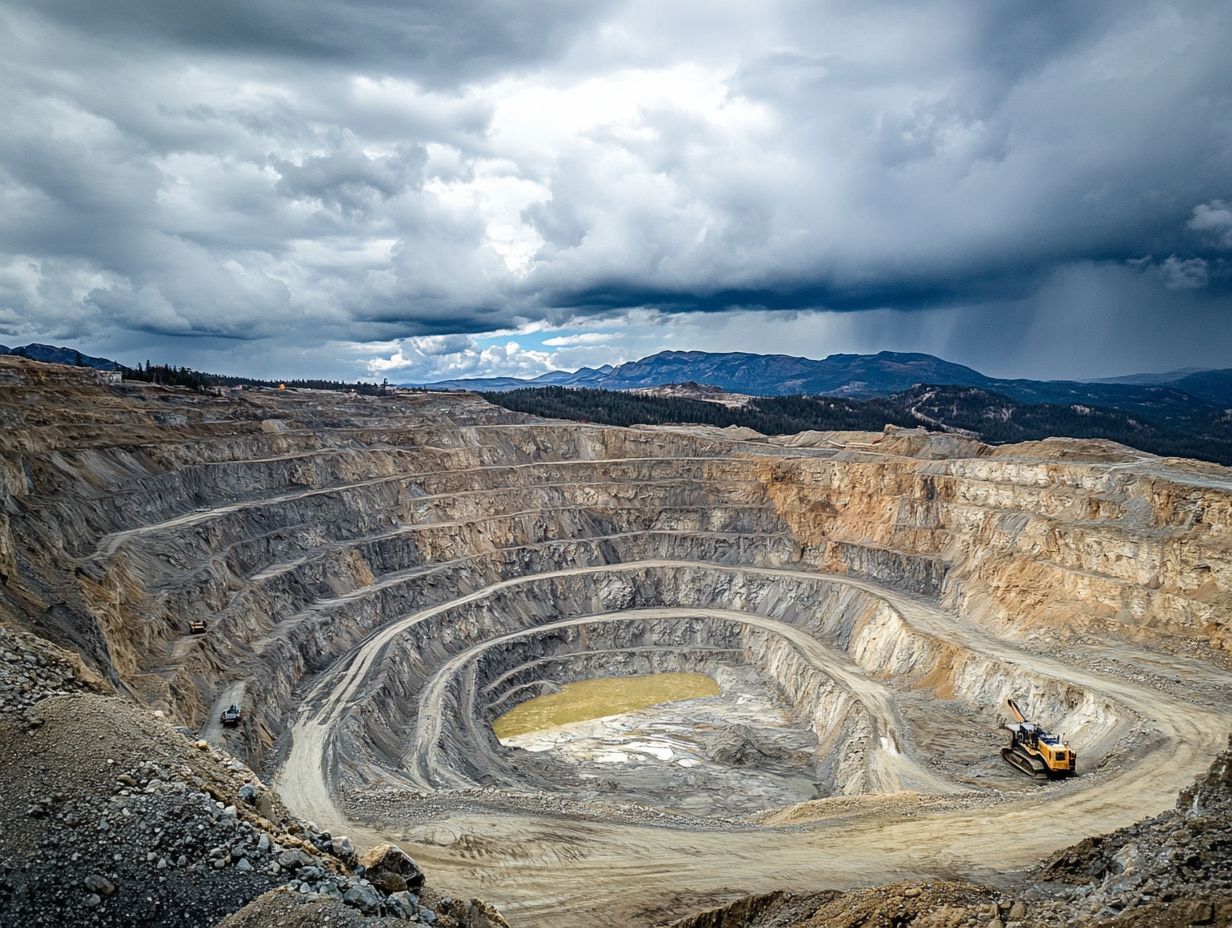
Gold mining contributes to air pollution through the release of toxic chemicals and dust particles from the mining process, as well as the burning of fossil fuels for energy. These pollutants can have serious health impacts on both humans and wildlife.
Get involved or learn more about sustainable mining practices today!
What effect does gold mining have on water quality?
Gold mining significantly affects water quality. The process uses toxic chemicals like cyanide to extract gold from ore. These chemicals can seep into nearby water sources, contaminating them and harming aquatic life.
How does gold mining contribute to deforestation?
Gold mining greatly contributes to deforestation. Large areas of land are cleared to access gold deposits, which devastates ecosystems and worsens climate change.
What are the long-term effects of gold mining on the environment?
Gold mining causes long-lasting harm to the environment. It leads to soil erosion, loss of biodiversity, and changes in water quality, among other issues. These effects can be irreversible for the environment and local communities.
What can be done to mitigate the environmental impact of gold mining?
To lessen the environmental effects of gold mining, we can adopt sustainable practices. This includes using non-toxic alternatives to cyanide, reusing water, and restoring land. Responsible recycling also helps reduce the demand for new gold.


